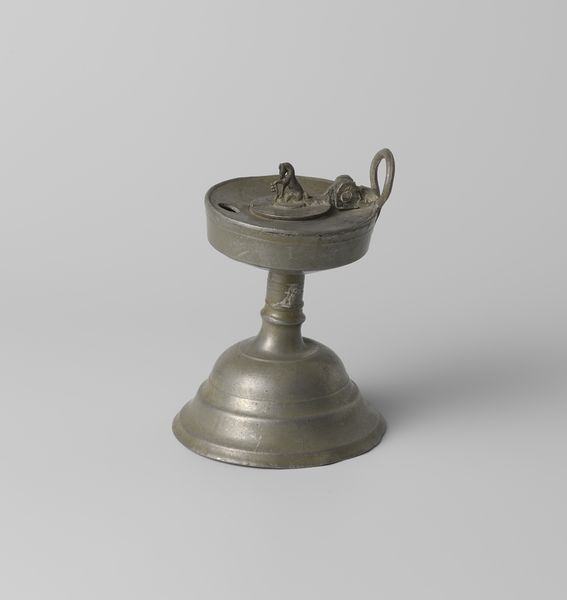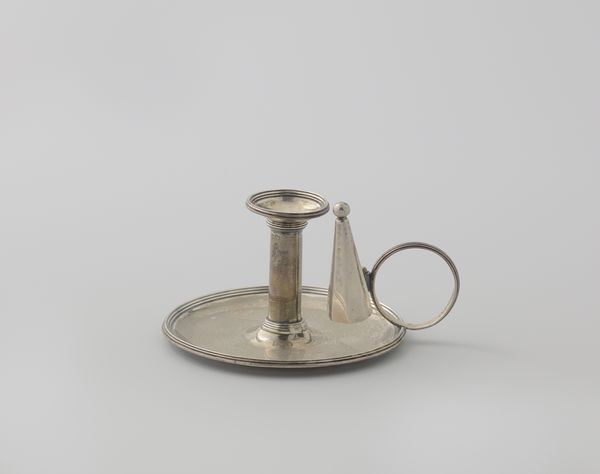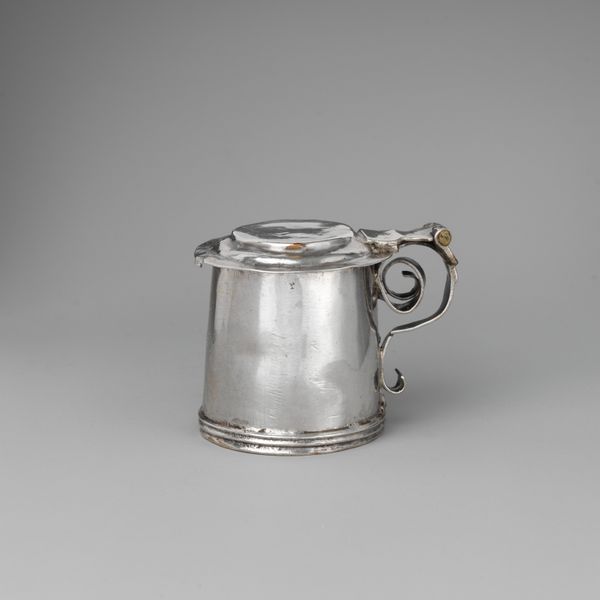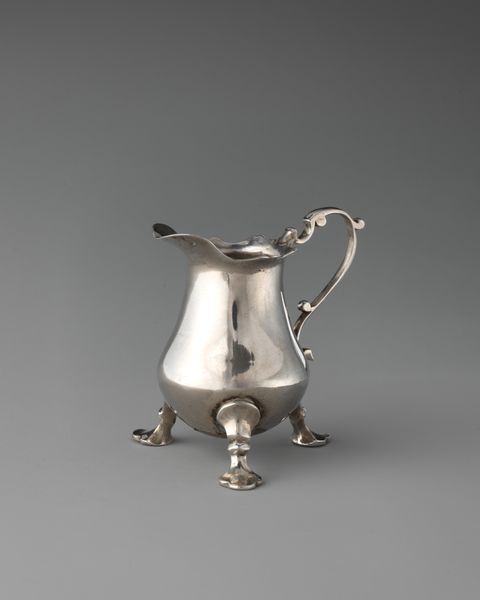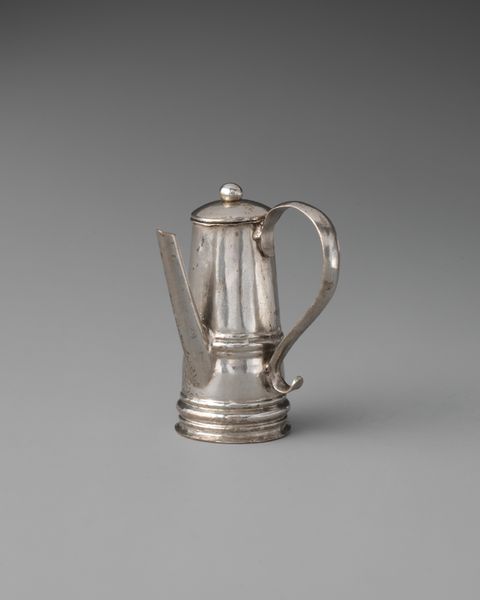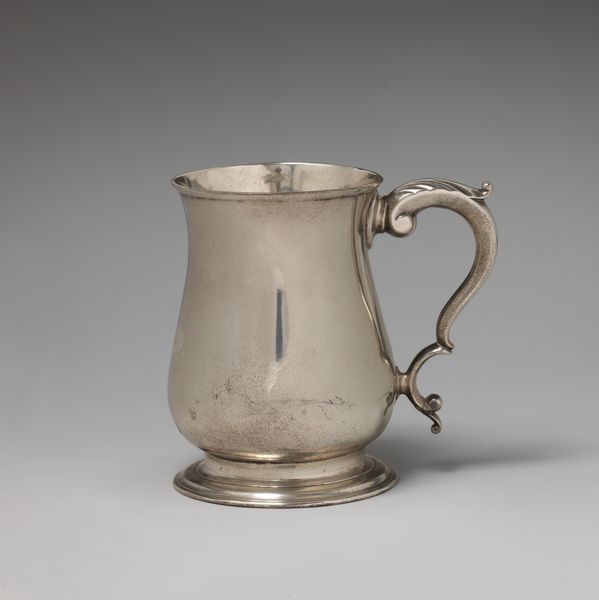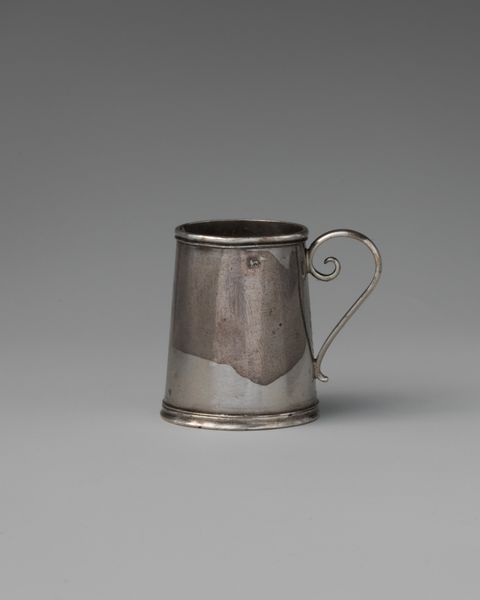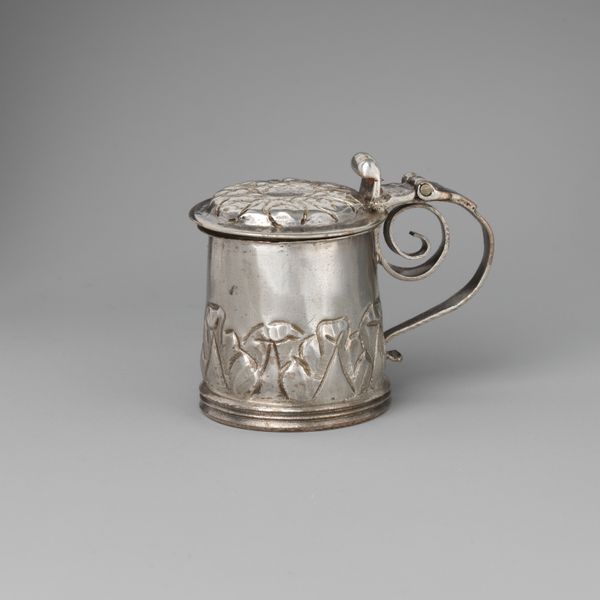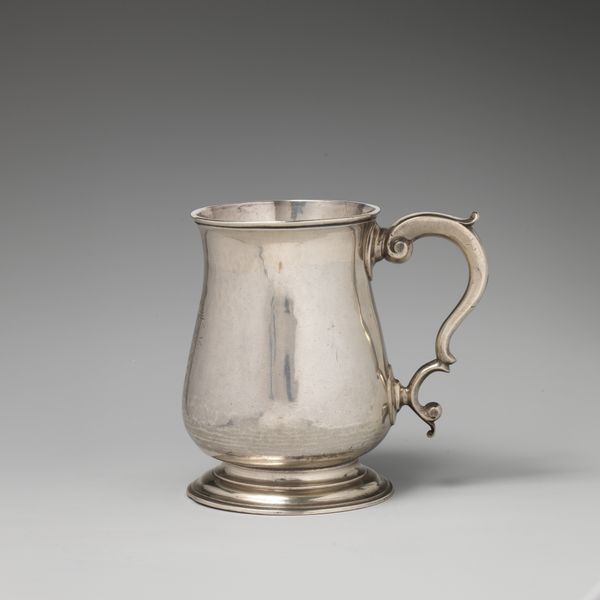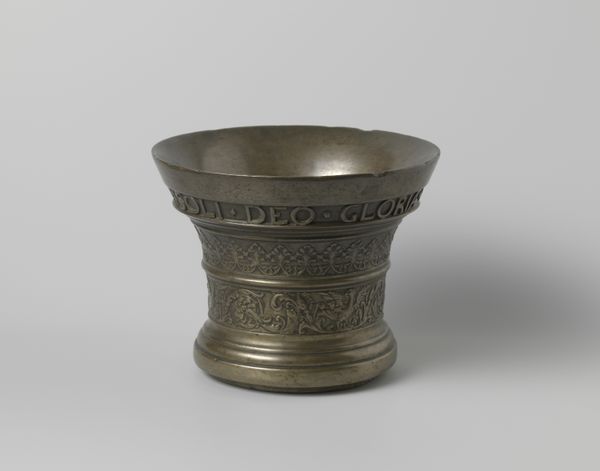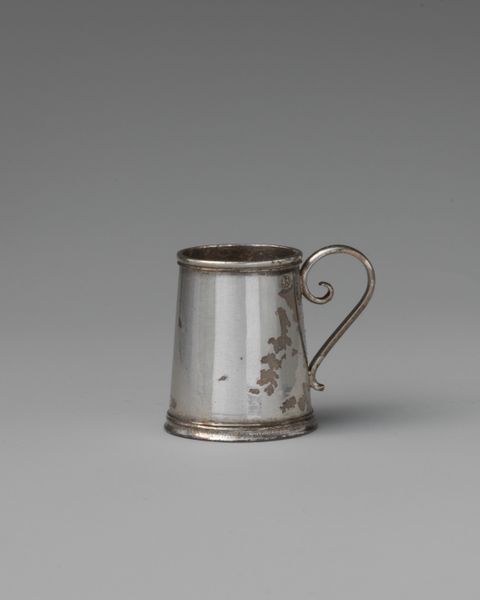
silver, sculpture
#
silver
#
baroque
#
sculpture
#
decorative-art
Dimensions: Overall: 1 3/4 × 2 9/16 in. (4.4 × 6.5 cm)
Copyright: Public Domain
Curator: Look at the smooth, cool gleam of this object. It's an 18th-century miniature chamber candlestick crafted from silver, now residing at the Metropolitan Museum of Art. The craftsmanship is superb. Editor: It has a quiet elegance, doesn't it? A sort of utilitarian beauty. But “miniature”…just how small are we talking? Curator: Very small. Intended for use in chambers and dressing rooms—spaces of relative privacy. Consider the economics of lighting at the time. Owning multiple of these, perhaps placed strategically, suggests considerable wealth and control over domestic life. Editor: Right. Beyond the Baroque styling, I'm drawn to think about the silver itself, and how that material speaks to broader social contexts. Silver production at this time involved labor practices across colonial trade routes and manufacturing workshops. Was it fashionable? How much would something like this have cost? Curator: Silver was prized for its reflective qualities and its ability to be easily cleaned. Beyond cost, access was also an element to it, particularly how this reflected elite display in specific locations. Imagine it reflecting candlelight in an intimate setting, perhaps highlighting personal rituals. Think of the intimate gatherings that these little objects illuminated! Editor: Intimate gatherings or… functional lighting for necessary labor like writing correspondence! Silver marked objects in the early modern era for a specific degree of society—signalling that distinction for those permitted entry. Curator: Yes, the circulation of this object through a particular social sphere raises further questions about its value and ownership—beyond just aesthetic or monetary terms. Who made this? Where exactly? And how did such an intimate object end up in a museum collection for public viewing centuries later? Editor: The shift in context—from private chamber to public display case—highlights that complex journey and really invites reflection on issues of materiality and how history unfolds to reshape and redeploy our aesthetic experience. Curator: Precisely. Looking at it through this historical lens really adds a layer of narrative.
Comments
No comments
Be the first to comment and join the conversation on the ultimate creative platform.
